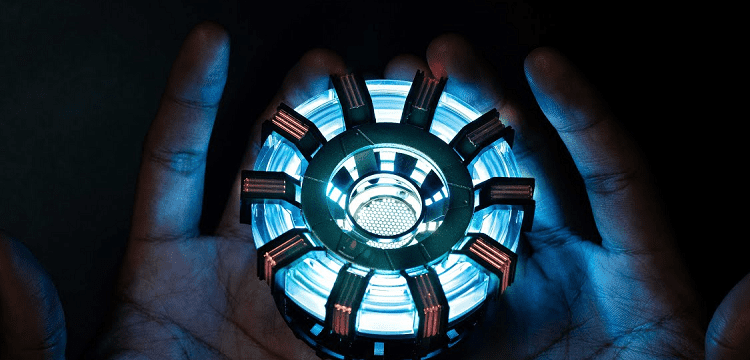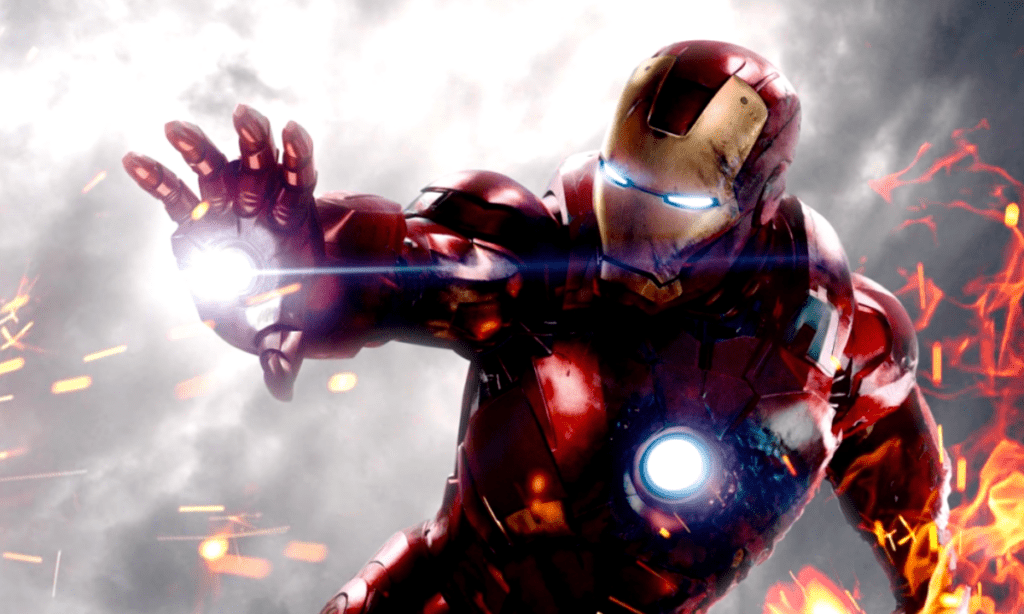- Mark Grayson Guide: 21st Century Hero - June 8, 2023
- How Old Is Deadpool? - June 2, 2023
- Magneto vs Iron Man - May 5, 2023
There’s much talk about the arc reactor but not enough about repulsors.
Although the arc is what powers Iron Man’s armor – without it, the suit wouldn’t exist – the repulsors are just as vital. They are responsible for most of Iron Man’s functions, like flight and attack.
But many misconceptions surround repulsors. So a lot of questions are probably going around your head. Are repulsors possible in real life? How do they work? Are they lasers? Spoiler: for this last question, the answer is no.
Yet I have seen articles, and videos claim they’re lasers when all official sources like comic books, official Marvel guides, and even the movies say otherwise.
Of course, that would bug a comic buff like me. So, I’ve assembled this Iron Man Repulsor Guide to set the record straight once and for all and explain the workings of repulsor technology. Warning: We’ll get pretty sciencey here, but I promise it will be a lot of fun!
My Bottom Line Up Front
Most people think Iron Man’s repulsors shoot lasers, but guess what? They actually shoot plasma. That’s way more interesting because we’re used to seeing laser weapons everywhere.
Plus, the use of plasma makes more scientific sense because the repulsor’s primary function is flight – and scientists are already studying how to use plasma as thrusters for flying vehicles.
Repulsors Explained
So, what do Repulsors do? And why are they vital for Iron Man? The Repulsors’ primary function is propulsion. Their original purpose was to provide more stability and agility during flight.
With them, Tony can achieve both speed and smoothness. He switches between these options by controlling the propulsion percentage. With a 1% thrust, Tony can stay afloat smoothly, while higher thrusts result in more speed and force.
The repulsors operate without oxygen or a combustible fuel source, allowing them to work effectively while submerged in water or a vacuum. They’re so effective they made SHIELD’s original engines obsolete. Iron Man changed SHIELD’s Hellicarrier to repulsors because the craft’s propeller blades are no match for Tony’s invention.
I like that repulsors work without fuel because they could be a game-changer when we talk about eliminating fossil fuels. They might serve as inspiration for the real world, as scientists are already studying how to do something similar.
Repulsors acquired a secondary function when Tony realized their effectiveness as weapons. The weapon’s lethality rate works like Star Trek’s phasers – there’s the lethal type and a non-lethal type that just stuns enemies.
Repulsors can be shot in short, concentrated bursts or steady and highly energetic beams. Besides the weaponized hand repulsors, Tony also has the unibeam, a repulsor with the same functionality and workings that comes from his chest.
The Arc Reactor

Before we delve into how Repulsors work and if they’re possible in real life, we got to understand their power source: the arc reactor.
Howard Stark and Anton Vanko created the Arc Reactor. This is a compact power core made out of almost pure sustainable energy. It was meant to supply the world with endless clean energy, but the original reactor only powered Stark Industries.
The technology at the time didn’t allow the project of providing global energy to move forward.
But Tony Stark perfected the reactor when he was captured in Vietnam – or Afghanistan in the movie. He used spare resources to create a miniature version of the arc reactor to power his armor and allow him to escape.
This version of the arc reactor is also responsible for keeping shrapnel away from Tony’s Heart. During his capture, an explosion causes shards to enter Tony’s heart. The arc reactor is what keeps Iron Man alive.
Through time the arc reactor evolved, just like his creator’s armor. It has powered increasingly larger Iron Man suits, like the Hulk Buster.
How Do Iron Man’s Repulsors Work?
Repulsors are units connected to the Arc Reactor. This is where they get their energy from. Official sources have discussed the reactor’s functioning at length, so I have a pretty good idea of how they work. Let’s dive into the explanations from two Marvel manuals and break them down for you.
The Official Handbook of the Marvel Universe

This manual was written and illustrated by Elliot Brown. It was released in 1989 and contains information and illustrations on all Iron Man armors at the time, plus the schematics for the most critical armors and the S.H.I.E.L.D. Helicarrier! When we get to the repulsors’ part, this is what the manual states:
The armor’s major offensive weapon are his repulsor rays, which are pulsed, laser-path, guided, medium-density plasma projectors, capable of generating a maximum concussive force of 150 pounds of T.N.T. “
This shows that from the comics’ first explanation, the repulsors were never laser but plasma weapons. Therefore, repulsor beams aren’t much of a beam because they’re not lasers. Instead, they’re composed of compressed, charged neutron particles that move based on Stark’s magnetic principles.
The lasers don’t act as weapons but as guides to the plasma’s direction. The plasma generated by repulsors is then used to make explosions or as thrust for Iron Man’s boots.
The All-New Iron Manual
The 2008 version of the Iron Manual goes more in-depth about how the repulsors work, and there’s even a storyline. Tony explains he found a malfunction because his right-hand repulsor was misaligned. He readily investigated the cause because even when they’re aligned, the risk of exploding is massive.
So we’ve learned the repulsor’s beams are made of compressed, charged neutron particles. But here’s something: neutrons don’t travel very far into the atmosphere. So how does the suit generate the power blasts?
This works by the intake of air through the suit.
The hand fires a shaft of ionized air, similar to a lightning bolt, that allows the neutrons to travel within. The air runs to an isolated section behind the palm, and an electric current runs through a piece of the gauntlet attached to the palm. This creates a small amount of plasma.
The repulsor effect is limited to the object’s surface – neutrons don’t penetrate until they interact with the outermost layer of atoms. This interaction causes an explosion of subatomic particles. This causes repulsion.
The Manual also explains the unibeam, a repulsor on the armor’s chest plate. This potent searchlight projects beams in every light spectrum – visible, infrared, and ultraviolet.
The unibeam also has a laser beam projector, an E.M.P. (electromagnetic pulse) generator that can shut down any electronic devices within a 50-yard radius, a scanning device that moves along the energy waves the unibeam sends out, and a holographic generator that can help with communication, change the armor’s appearance, and project images to distract and confuse opponents.
Tony also added pulse bolts to the armor. These are extremely powerful plasma discharges that grow in strength as they seek their target. Other weapons include sonic generators and a laser torch built into the finger of Tony’s gauntlet. Plus, the armor’s surface can generate an electric charge to dispel attackers.
How Does Iron Man Control the Repulsor Beams?

The basics of repulsor functioning are these: they were built using micro-circuitry. So, they are controlled by electronic nerve devices located on Iron Man’s helmets. But newer versions use a cybernetic interface system that acts from Tony’s brain.
This man-machine interface is an interesting angle that hasn’t been as explored as I would like. The exception is Infamous Iron Man when Tony creates a version of the suit that behaves just like symbiotes – Venom and Carnage – do.
This allows for more integration and a quicker response time. This suit is so fast it can wrap itself around Tony’s body before a single bullet can hit him.
Movies
Throughout the movies, the repulsor’s characteristics have been explored to exhaustion. The Repulsors in the films work similarly, but this time they’re the backbone of the weapons Tony is selling in the first movie.
During one of the initial scenes, Tony introduces the technology to the Afghanistan army.
With that in mind, I present the crown jewel of Stark Industries’s Freedom Line of armaments. This is the first missile to incorporate my proprietary Repulsor Technology—or R.T., as we like to call it. A breakthrough in energy control and guidance.”
The repulsors were first used as a way to guide and control missiles. But then they took the function we are used to. In the next two movies, we would see more properties from the repulsors.
During Iron Man 2, Tony and Rhodey discover that firing two repulsors at each other creates a massive explosion in between. In the third movie, Iron Man experiments with mobile repulsors. He creates a one-use repulsor that the billionaire discarded afterward.
The Physics of Iron Man

Now it’s time to get sciencey!
To see if Iron Man would be possible in real life, we first have to analyze the limits of physics itself and then the limits of our puny human tech. Let’s start with the limitations of physics itself.
Physicist Simon Benjamin did a great job explaining the physics of Iron Man in this video. I’ll break down the part related to the repulsors so you save time. I’ll put it in lay terms. Trust me, my basic level knowledge of physics I got from an introductory college class makes me more than qualified for this endeavor.
So, it goes something like this: the biggest impediment to Iron Man’s armor is creating a powerful and small power generator, i.e., an arc reactor. In the first movie, Tony says the reactor produces 3 Gigajoules per second or 3 Gigawatts. This is the same as the output of a big nuclear power station.
Could a thing so small as the movie’s arc reactor produce this colossal amount of energy?
According to physics, what is the cap of energy such a small thing can make?
To start answering, consider this: anything that produces power has to consume fuel. As this is only a tiny object, it can’t consume too much of it, so let’s use 1 gram of combustible as an example.
Then, we use the most famous equation in physics:
E=mc².
Don’t be scared. This is a simple equation. All it means is that the energy equals the mass multiplied by the speed of light squared. Squared means the value will be multiplied by itself. So we substitute the values we established on the equation.
The speed of light is 300,000,000 m/s.
Fun fact, that’s fast enough to go around the Earth 7 times each second.
When you square the speed of light, you get about 1017.
Multiply that by 1 gram, and you get 1014 Joules or 100,000 GJ.
This is the max of Gigajoules we could get from a gram of fuel.
Making a few calculations, we see that by generating 3 Gigajoules, it’ll take us 33,000 seconds to burn a gram of fuel. That means more or less 9 hours of use before refueling. Now, to the next question. Can this amount of power do all the feats the Iron armor does?
To answer that, we need to know how much energy it costs for Tony to go up 10 kilometers from the ground. First, we must establish how heavy Tony and his suit are.
Let’s say Tony weighs 75kg alone and 200kg with a suit. Now we use the little formula below that calculates how much energy the armor will need to fly 10,000 kilometers from the ground.
E=mgh
The g stands for the gravitational force Tony has to oppose, with each kilogram going up. This has a fixed value of 9,8m/s, but we’ll use 10m/s to simplify.
Now multiply everything. E=mgh = 200 x 10 x 10.000 = 20.000.000 J or 20 Megajoules.
That’s not a huge amount, so in theory, it should be easy for Tony to fly high in the skies. Even if Iron Man’s boots are only 10% energy efficient, the energy cost of flying is way below the 3 Gigajoules per second the reactor produces. There’s still a lot of power to spare for computers and offensive attacks.
So, in theory, Iron Man’s armor could be possible if one day we’re able to build a small object that can produce such a massive amount of energy. According to physics, the only problem with Iron Man in real life is the impossibility of Tony’s body resisting the high impact we see in the movies.
But that’s a story for another time. You can watch the whole video to get it.
I already spent all my physics knowledge with this explanation. My brain is scrambled.
What Tech Would We Need to Build Repulsors?

Although there’s no cap in physics for the amount of power required to energize the suit, we’re far from building anything so small that can produce 3 Gigawatts of energy. The amount of energy required to do all Iron Man does is far away from reality.
Take, for instance, the energy needed to fly in jet boots. Right now, we’re only capable of holding a person in the air for a total of 30 seconds.
Another example is the energy necessary to create a beam with enough power to make a fist-sized hole in a half-inch thick steel plate. For that, you would need 2 gigawatts of energy – almost as high as the production of a nuclear power plant.
But is there any real-life technology similar to repulsors?
Can we still dream of a day we’ll see an Iron Man flying in the skies?
I don’t have an answer to the last question. But there are some cool examples related to how repulsors work that can fill our minds with wonder. For instance, repulsors are similar to Ion thrusters, which are real. These thrusters use a gas called Xenon.
How do they work?
Scientists pump the propellant – usually xenon – into a magnetic chamber with an electron gun. The gun separates electrons and protons from the xenon, sending the protons through a negative and positive grid. When they reach the outside, the protons are shot with a neutralizing gun – and this creates propulsion.
But these thrusters are massive in size and only produce a little thrust in a short time. So something like this is still miles away from a repulsor.
For now, we’re far away from building the plasma thrusters Iron Man uses to fly around. It’s basically impossible to build them in the size and power required to lift a main in the air at supersonic speed. But scientists are studying the possibility of using this principle for spaceships and rockets.
It seems like the part where SHIELD’s Hellicarrier uses repulsors is not that far-fetched. Maybe in a few years, we’ll see large flying vehicles with repulsors.
A Noteworthy Cosplay

Kersey Applications is a fantastic YouTube channel that showcases the process of building various cosplay pieces that use tech and coding to resemble their movie counterparts. The channel’s creator is a master cosplayer and coder, and in this video, he breaks down how he built repulsors for his Iron Man costume.
You can check how he did the other costume parts in his channel too.
The creator built three types of repulsors, each with different sizes and functionalities. Some run code, so they obey commands and can recognize the movement of his hands. The builder uses a microcontroller with Wi-Fi built into it to make all the controls work – actions, communication, and everything.
The coder uses sensors so the repulsors know how to fire based on movement and orientation. Red light means it’s on, green light means it’s connected to Wi-Fi, and blue indicates the repulsors are talking to the MQTT server – which controls everything.
The sensor works like this: it measures gravity, and once the hand is up, a white light appears. In this mode, the repulsor is on, but it isn’t yet firing.
Once the hand is 90 degrees, the light gets brighter, and the hand fires.
All parts were 3d printed and work mechanically. In the end, the creator applied an aluminum paint so the repulsors looked like the ones Tony built in Afghanistan.
The result was spot one – it looks just like the movie. But undoubtedly, my favorite thing about his creation is that it lights up based on movement. That was genius!
FAQs
Question: Are Iron Man’s Repulsors Lethal?
Answer: Iron Man’s repulsors can be lethal or not. It depends on their setting. They work just like Star Trek’s phaser – they have lethal and stun modes.
Question: What Do Iron Man’s Repulsors Shoot?
Answer: Contrary to popular belief, Iron Man’s repulsors don’t shoot lasers. They shoot plasma.
Question: What are Iron Man’s Repulsors Made of?
Answer: The repulsors are made from a plasma heat blast that can easily cut through metal.
Future Possibility
Iron Man’s technology makes the character stand out from so many other superheroes. Although most sci-fi concepts are basically technobabble, Iron Man’s tech is actually debatable from a scientific point of view – even if we’re miles away from achieving any of this.
The primary example is the arc reactor, and though I’ve discussed it here, this article goes in-depth to reveal more aspects of this fantastic technology.
But if you want to turn your attention to a more out-of-the-box idea, read this guide and see who would win a fight between Cyborg and Iron Man.
Related Read
- Best Iron Man of All Time: Top Versions and Variations
- Best Iron Man Helmets
- Best Iron Man Hand Guide
- Iron Man Arc Reactor Guide
Sources:

